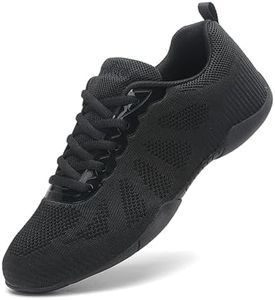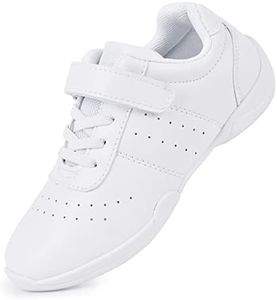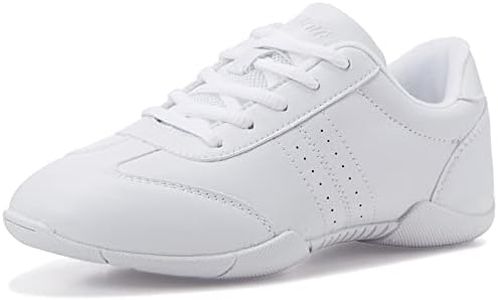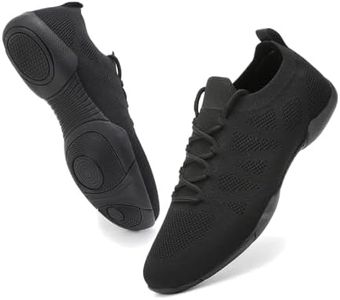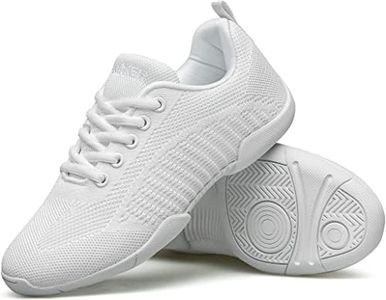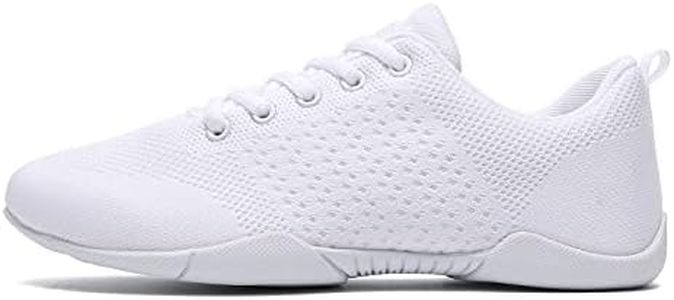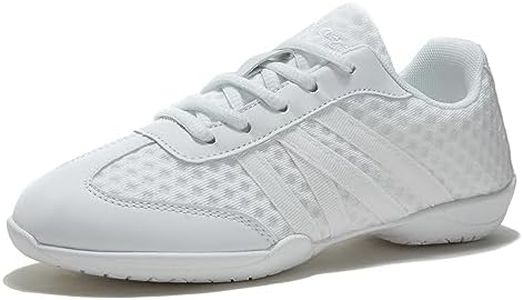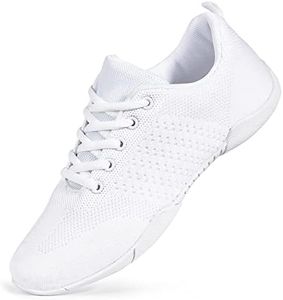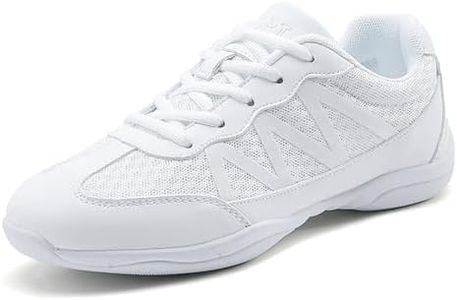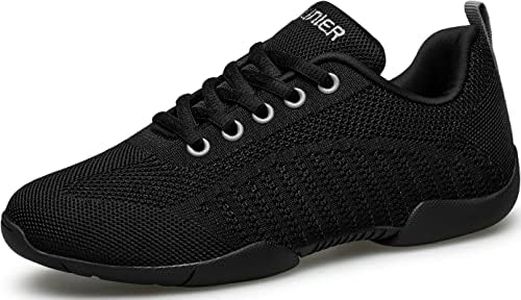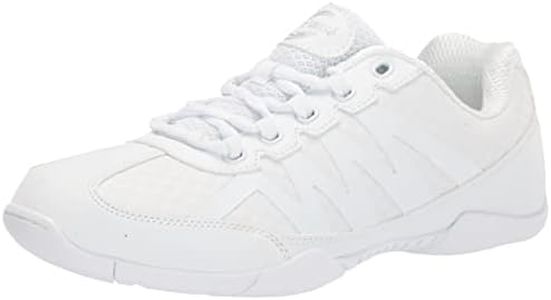We Use CookiesWe use cookies to enhance the security, performance,
functionality and for analytical and promotional activities. By continuing to browse this site you
are agreeing to our privacy policy
10 Best Kid Cheerleading Shoes
From leading brands and best sellers available on the web.Buying Guide for the Best Kid Cheerleading Shoes
Choosing the right cheerleading shoes for kids is essential for both performance and safety. Cheerleading involves a mix of jumping, dancing, stunting, and tumbling, so footwear needs to provide the right blend of support, comfort, and flexibility. Since children’s feet are still developing, it’s even more important to find shoes that will protect their feet during vigorous activity without inhibiting their movement. Understanding the key features will help you make a choice that's not only comfortable but helps your child perform at their best.Fit and SizingFit and sizing refer to how well the shoes match your child’s foot measurements, including length and width. Cheer shoes should fit snugly so the foot doesn’t slide around, but they shouldn’t pinch or cause discomfort. Young athletes need enough room to wiggle their toes but not so much that the shoes feel loose. To choose the right fit, measure your child’s feet (often in the afternoon when they are slightly swollen), check the manufacturer’s size chart, and try them on with the socks they’ll actually wear for practice or performances. Pay attention to user reviews regarding whether a shoe runs large or small. Remember, too-tight shoes can cause blisters, while shoes that are too loose can lead to instability and unsafe landings.
WeightThe weight of the shoe indicates how heavy or light it feels on the foot. Lighter shoes are generally preferred for cheerleading as they make jumps, kicks, and stunts easier and reduce fatigue on small legs. Shoe weight is often influenced by the materials used and the design. Very lightweight shoes provide maximum flexibility and help with high-energy movements, but sometimes sacrifice durability. If your child is younger or new to cheer, a balance between lightweight design and a bit of sturdiness is ideal; more advanced cheerleaders may prefer ultra-light options for easier stunting and tumbling.
Support and CushioningSupport and cushioning are about how much the shoe helps protect the foot from shock and how well it stabilizes the ankle during movement. Good cheer shoes should have cushioning in the sole to soak up the impact from jumps and landings. They should also offer adequate arch and heel support, especially for kids with flat feet or high arches. Too much cushioning can make shoes bulky, while too little may lead to soreness or injury over time. Look for options described as having 'shock-absorbing' or 'supportive' features if your child is involved in high-impact stunts, but ensure they’re still flexible enough to point the toes and move freely.
FlexibilityFlexibility refers to how easily the shoe bends, especially at the toe and forefoot. You want a shoe that moves with your child’s foot so they can point their toes and land properly during routines. Very stiff shoes limit movement and can cause discomfort, but shoes that are too floppy might not offer enough protection. For young kids or beginners, moderate flexibility is often best—it should be easy to bend the shoe in your hands, but it should still spring back. If your child does a lot of dance or tumbling, prioritizing flexibility will help them perform their best.
Grip and OutsoleGrip and outsole describe how much traction the shoe provides on the floor or mat, and what materials the sole is made of. A good cheer shoe should have a non-marking, rubberized outsole that grips securely to prevent slipping during tumbling, jumping, or dancing. Shoes with too much grip can limit turning, while not enough can cause sliding falls. The sole’s pattern and thickness affect both grip and feel; thinner soles offer better floor feel and are lighter, while thicker ones might protect better but add weight. Consider where your child will cheer—on mats, gym floors, or outdoor surfaces—and look for an outsole design that matches those needs.
Breathability and MaterialThe breathability and material of the shoe determine how comfortable they keep the foot during active use. Shoes made with mesh panels or lightweight synthetic uppers allow air to flow, helping feet stay cooler and drier during workouts or performances. All-leather shoes can be more durable, but may get hot and sweaty, leading to discomfort or odor. For most kids, a shoe with a combination of mesh and synthetic offers the best comfort and durability. If your child tends to sweat a lot or practices often, prioritize shoes with good ventilation.
Ease of CleaningCheer shoes need to look clean, especially for performances, and kids’ shoes get dirty fast. White cheer shoes can stain or scuff easily. Some materials are easier to wipe down or machine wash than others. When considering options, think about how easy it will be to maintain the shoes’ appearance. Shoes with smooth surfaces are generally easier to clean than those with complex textures. If your child's cheerleading often takes place outdoors or on dirty surfaces, easier-to-clean shoes will save you time and keep them looking performance-ready.
